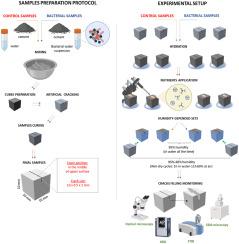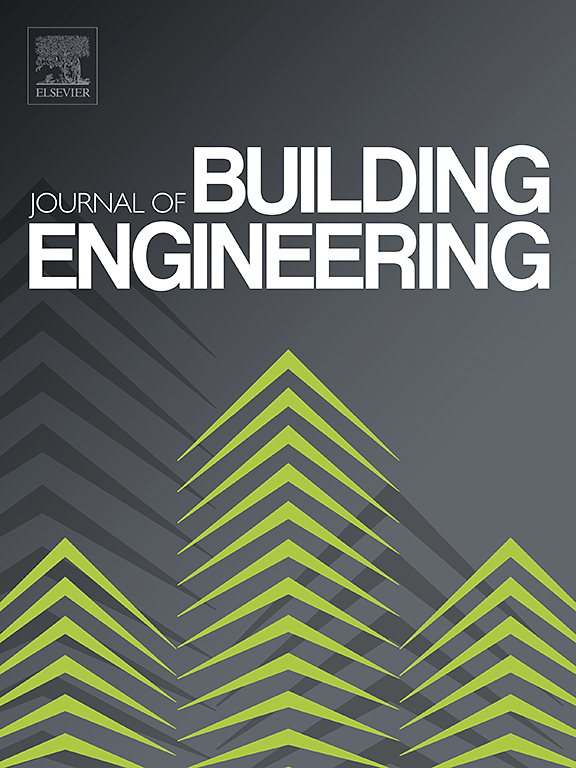Insights into self-healing capacity of cement matrix containing high-efficiency bacteria under challenging conditions
IF 6.7
2区 工程技术
Q1 CONSTRUCTION & BUILDING TECHNOLOGY
引用次数: 0
Abstract
This study provides novel insights into enhancing the self-healing capacity of cement matrix through the integration of natural Bacillus isolates derived from leached and calcified soils. The challenging and highly alkaline environment of cement matrix typically impedes bacterial activity, making the successful application of these bacteria in such conditions particularly significant. In this research, Bacillus licheniformis-Bacillus muralis co-culture was identified as highly effective in inducing calcium carbonate precipitation, a critical factor for self-healing. The selected co-cultured bacterial activity resulted in the formation of up to 2.885 g/100 mL of CaCO₃, while the co-culture's effectiveness was demonstrated by the complete repair of a 0.5 mm crack within 96 h demonstrating a repair rate of approximately 0.125 mm per 24 h. Furthermore, the study showed that the bacterial co-culture could survive and remain active under varying environmental conditions, including wet-dry cycles and extreme pH levels, which are typical of construction sites. This rapid crack closure, achieved without additional protective measures for the bacteria, marks a significant advancement in the application of microbial co-cultures for enhancing the durability of cement-based materials. The study also provides a detailed analysis of bacterial behavior under various environmental stresses typical of construction sites, highlighting the robustness and practical applicability of this biotechnological approach. As the long-term output, the obtained results represent a substantial advancement in the practical application of microbial co-cultures for self-healing effect of cement-based materials.

洞察含有高效细菌的水泥基质在挑战性条件下的自愈合能力
这项研究为通过整合从浸出土壤和钙化土壤中分离出来的天然芽孢杆菌来增强水泥基质的自愈合能力提供了新的见解。水泥基质具有挑战性的高碱性环境通常会阻碍细菌的活性,因此在这种条件下成功应用这些细菌意义重大。在这项研究中,地衣芽孢杆菌-壁草芽孢杆菌共培养菌被认定在诱导碳酸钙沉淀方面非常有效,而碳酸钙沉淀是自我修复的一个关键因素。选定的共培养细菌活性可形成高达 2.885 克/100 毫升的 CaCO₃,而共培养细菌的有效性则体现在 96 小时内完全修复了 0.5 毫米的裂缝,修复率约为每 24 小时 0.125 毫米。此外,该研究还表明,共培养细菌可在不同的环境条件下存活并保持活性,包括建筑工地典型的干湿循环和极端 pH 值。这种在不对细菌采取额外保护措施的情况下实现的快速裂缝闭合,标志着在应用微生物共培养物提高水泥基材料耐久性方面取得了重大进展。这项研究还详细分析了细菌在建筑工地各种典型环境压力下的行为,凸显了这种生物技术方法的稳健性和实用性。作为长期成果,所获得的结果代表了在实际应用微生物共培养物提高水泥基材料自愈合效果方面取得的重大进展。
本文章由计算机程序翻译,如有差异,请以英文原文为准。
求助全文
约1分钟内获得全文
求助全文
来源期刊

Journal of building engineering
Engineering-Civil and Structural Engineering
CiteScore
10.00
自引率
12.50%
发文量
1901
审稿时长
35 days
期刊介绍:
The Journal of Building Engineering is an interdisciplinary journal that covers all aspects of science and technology concerned with the whole life cycle of the built environment; from the design phase through to construction, operation, performance, maintenance and its deterioration.
 求助内容:
求助内容: 应助结果提醒方式:
应助结果提醒方式:


